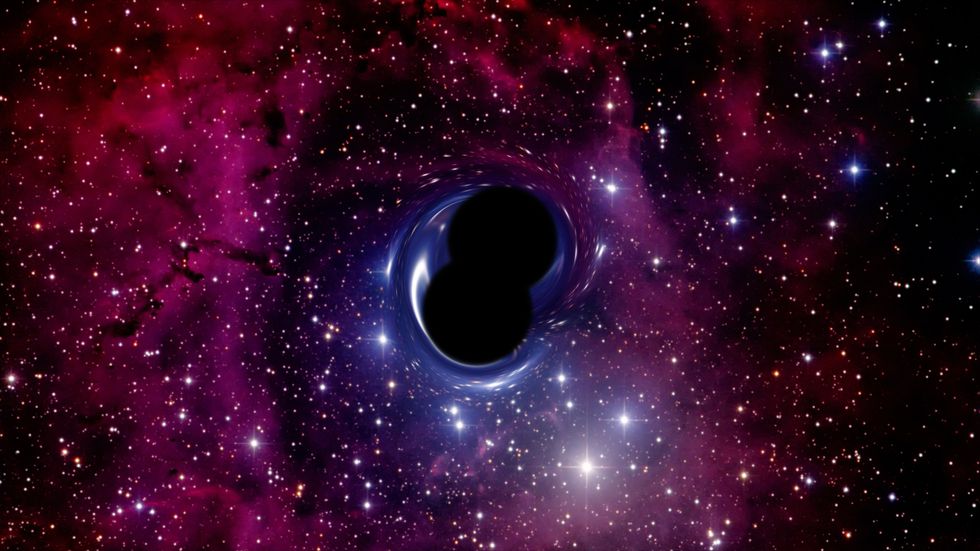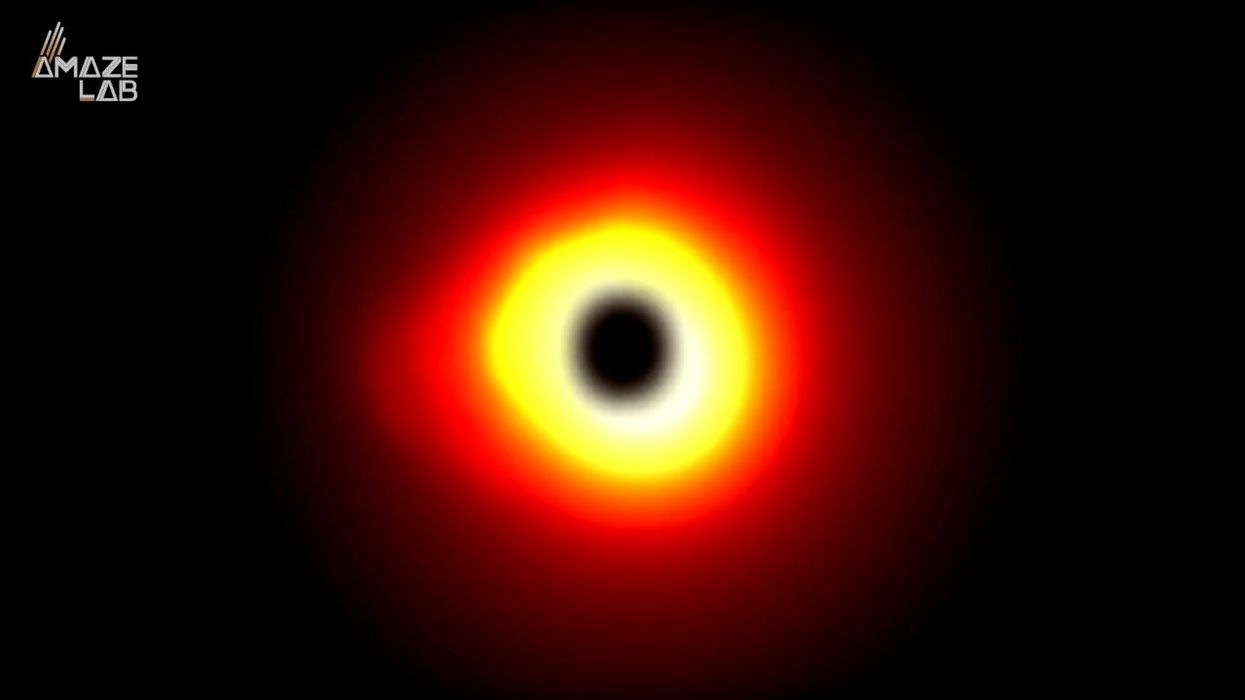Science & Tech
Harry Fletcher
May 03, 2023
Astronomers Capture First Image of a Black Hole’s Relativistic Jet
content.jwplatform.com
A new ultramassive black hole has been discovered, and we’re not even going to try to get our heads around its scale.
The enormous object observed for the first time is 30 billion times bigger than the Sun and is located hundreds of millions of light-years away.
And don’t worry if that’s an impossible size to imagine – even the researchers leading the project can’t quite comprehend it.
“Even as an astronomer, I find it hard to comprehend how big this thing is," James Nightingale told BBC Radio Newcastle.
Sign up to our new free Indy100 weekly newsletter
Nightingale is a study author from the department of physics of Durham University, who is part of the team who made the discovery. The findings were published in the journal Monthly Notices of the Royal Astronomical Society.
He went on to say in a press release that experts believe black holes cannot grow much larger than the newly discovered object, meaning it could remain one of the biggest ever discovered for some time.

"This particular black hole, which is roughly 30 billion times the mass of our sun, is one of the biggest ever detected and on the upper limit of how large we believe black holes can theoretically become, so it is an extremely exciting discovery," Nightingale said in a press release.
The full extent of the black hole was observable after studying the phenomenon of gravitational lensing. In cases of entire galaxies and huge objects like this one, they come to have such strong gravitational pulls that they are capable of bending light.
In such a way, light from galaxies otherwise hidden behind other galaxies becomes more observable because of the way entities closer in proximity to Earth bend light.
"Most of the biggest black holes that we know about are in an active state, where matter pulled in close to the black hole heats up and releases energy in the form of light, X-rays, and other radiation," Nightingale added.
"However, gravitational lensing makes it possible to study inactive black holes, something not currently possible in distant galaxies. This approach could let us detect many more black holes beyond our local universe and reveal how these exotic objects evolved further back in cosmic time.”
Have your say in our news democracy. Click the upvote icon at the top of the page to help raise this article through the indy100 rankings.
Top 100
The Conversation (0)














